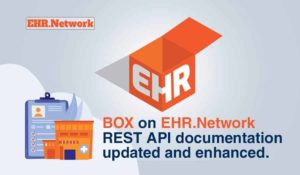Notification Service from EHR.Network – Advanced Healthcare Notification APIs for your Applications.

We are happy to announce the public availability of our Unified Healthcare Notification Service. It will be available to application developers as a set of REST APIs on our integrated DataFirst clinical data platform.
This service enables digital health applications to implement complex notification functionality easily. Once integrated, it allows applications to send messages via email, SMS and PUSH channels using a standard REST API interface.
Since we have implemented all the required advanced functionality, applications do not have to deal with separate client libraries for different notification channels. Our integrated scheduler allows applications to implement advanced features such as repeat notifications, scheduled notifications, address lookups and personalized messages without any additional coding.
The service is available as a part of the integrated healthcare APIs and as a standalone service. The standalone service does not allow address lookups and personalized messages, that require the other platform services to function properly.
Advantages of Unified Healthcare Notification Service for App Developers
This service takes the pain out of providing advanced notification service for your healthcare applications. Instead of dealing with language specific client libraries for different notification channels such as SMS, PUSH and Email, you can get all of these functionality via our unified REST APIs.
All your scheduled notifications and repeat notifications are a breeze as the service takes care of it all seamlessly.
Some of the other advantages are…
- Ready to use configurable service
- Reduce development and go to market time
- Cloud hosted and scalable
- Fully REST API based.
- No protocols or libraries to learn, implement or support
- Manage multiple channels and gateways using same APIs
- Integrated scheduled and repeat notifications
- OpEX model – pay as you use
List of features
Below are some of the important features of this Unified Healthcare Notification Service.
- Supported channels – Email, SMS & PUSH
- Multiple scheduling options
- Immediate
- At specific instant(s) – Datetime, weekdays & times
- Repeated at specific intervals
- Repeated at specific intervals till end time
- Repeated at specific intervals for specified cycles
- Schedule multiple message cycles – Create multiple notification schedules for the same notification, the service will process and deliver them at the correct time.
- Personalized messages for multiple recipients – Include multiple recipients in the same notification and the service will process and deliver personalized messages individually
- Priority messages – Fast track processing and reserved queue to help deliver priority messages faster
- Automatically resolve recipient addresses at runtime – Resolve email address & mobile number at message delivery time. This will reduce the number of API calls from the applications and take care of any updates to these values between notification scheduling and delivery
- Variables in subject and message body – Supports variables in the message. These variables get resolved from EHR.Network at message delivery time and actual values will be added in their place in the outgoing messages
- Organization level custom gateways – Organizations can register gateways for every channel it wants to use. Once a gateway is registered, users in the organization can schedule notifications to be sent using that channel
- Multiple gateways – Organizations can register multiple gateways for outgoing notifications. For example you may specify one gateway for normal messages and another for emergency messages. Another use case is to use one gateway for local messages and another one for international messages
- Track message delivery failures – Successful and failed messages are logged and tracked to provide actionable reports
- PUSH notification without appID – Workflow that allows PUSH notifications to fixed platform UUIDs(userUuid & personUuid) of recipients instead of dynamic appIDs
- Multiple template support for SMS – Supports multiple registered message templates for SMS. Ability to choose templates for each notification
- Free form email & PUSH notifications – Use flexible message formats for email & PUSH notifications
- Attachments in Email – Supports sending of attachments in Email messages
Feedback and Reports
The Unified Healthcare Notification Service also implements a variety of user feedback and reporting features to help applications monitor and troubleshoot their notification functionality.
Apart from keeping track of the delivered notifications, this feature can be used to identify undelivered notifications and take corrective action.
Some of the currently available reports include..
- Message count – by period, channel, status(success, failure)
- Message data size – by period, channel, status(success, failure)
- Message list – by period, channel, status(success, failure)
- Messages – View message details









0 Comments